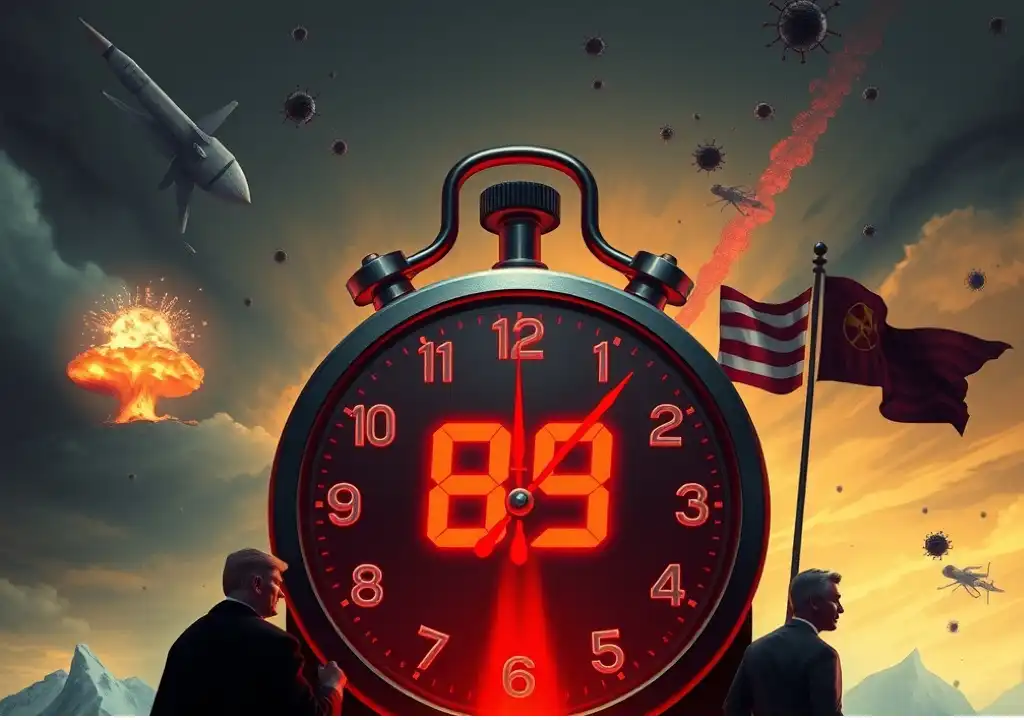The Doomsday Clock is a symbolic indicator of how near humanity is to self-destruction through our own dangerous technologies and actions.
For the first time in three years, the Bulletin of the Atomic Scientists (BAS) has advanced the Doomsday Clock by one second, placing it at 89 seconds to midnight, reflecting a rise in global threats.
“This decision comes from our board’s belief that the world has failed to reduce the major dangers we face,” said Daniel Holz, chair of the BAS science and security board, during a live broadcast on Tuesday.
Persistent global dangers such as nuclear arms, climate shifts, biological threats, pandemics, and advanced technologies like artificial intelligence have brought the clock closer to midnight than ever in its 78-year history.
What is the Doomsday Clock?
The Doomsday Clock serves as a symbolic warning of how near the world is to catastrophe caused by human-made threats, as explained by the BAS, a nonprofit group based in Chicago.
The clock represents many ideas at once: it is a metaphor, an icon, a branding image, and one of the most powerful visuals created in the past century.
As the hands move closer to midnight, the risk of humanity’s end increases.
Such threats may come from political instability, weapons of war, disruptive tech, global warming, or deadly outbreaks.
How is the clock adjusted?
The clock’s time is altered based on expert assessments of global existential dangers.
Each year, BAS evaluates global risks and updates the time accordingly. A panel made up of scientists and experts in nuclear and environmental issues — including ten Nobel Prize winners — meets to decide how close the clock should be to midnight.
“The Bulletin works like a doctor giving a diagnosis,” says the group’s official site.
“We analyze data like doctors read test results and also consider hard-to-measure elements, like how doctors listen to their patients. We look at all available evidence, then make a judgment about the risks if world leaders and people fail to act.”
Has the clock ever moved backward?
Yes. One major rollback happened in 1991 when US President George HW Bush and Soviet leader Mikhail Gorbachev signed the START treaty to cut nuclear weapons and missiles.
That move pushed the clock back by seven seconds. The most distant point from midnight was 17 minutes.
When was the Doomsday Clock created?
The Doomsday Clock was established in 1947 by the Bulletin of the Atomic Scientists, founded in 1945 by physicists Albert Einstein, J. Robert Oppenheimer, Eugene Rabinowitch, and University of Chicago researchers.
At its launch, the clock was set to seven minutes before midnight. But after the USSR detonated its first atomic bomb in 1949, editor Rabinowitch moved it to three minutes before midnight.
According to the University of Chicago, until recently the closest the clock had ever been set was two minutes to midnight — once in 1953 during US-Soviet hydrogen bomb tests, and again in 2018 due to weakened global diplomacy and inaction on climate.
Today, the Doomsday Clock is displayed at BAS headquarters in Chicago.

